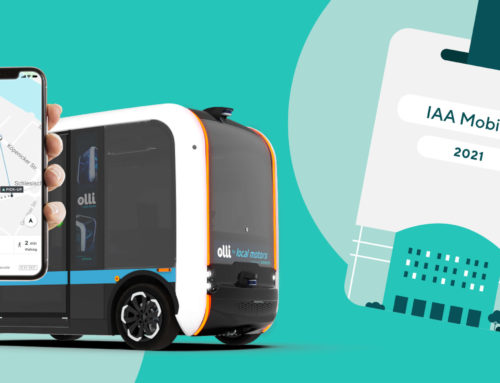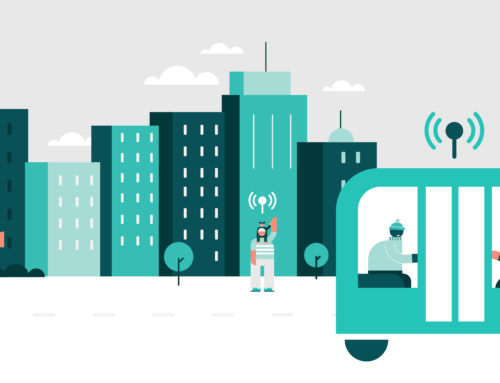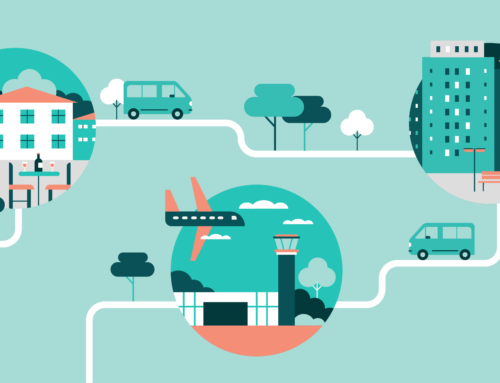Less emissions, cleaner air, more space to live – these are some of the changes demanded by the climate movement. But how can new on-demand bus services contribute to a better and more sustainable future and reduce the impact of climate change?
Last Friday, 1.4 million people took to the streets in Germany to demonstrate against the current climate policy. Among them were students and citizens, but also employees of companies who wanted to set an example against the advancing climate change.

door2door employees also demonstrated at the climate strike in Berlin.
The German government’s climate package, adopted on the same day, was strongly criticized by organisers of the Fridays For Future movement and some political parties – who claimed the measures were too ineffective to bring about real change. The most common criticism is that climate-friendly transport is not being sufficiently promoted, nor is there enough incentive to leave one’s car at home. According to the IPCC report, CO2 emissions must be reduced by 50% by 2030 to prevent global warming of 1.5 degrees Celsius. Accordingly, our mobility behaviour must change if we want to create a more positive future.
More mobility, less traffic
Transport operators currently face the challenge of increasing urbanization: more and more people are moving to cities, and fewer live in rural areas. How can those living in a region be transported efficiently, flexibly and comfortably without having to use their own car? Putting more vehicles on the road with new services may sound counterproductive at first. But on-demand services expand public transport precisely where transport gaps exists. This is where the incentive to switch to personal transport – whether one’s own car or a car-sharing service – has been greatest so far.
A forecast by the British Department of Transport says that with shared mobility, street traffic can be reduced by 95% by 2050.
A study from Lisbon found that by switching to new on-demand bus services, up to 100 cars could be replaced by three shuttles. Another forecast by the British Department of Transport says that similar services could reduce street traffic by 95% by 2050.
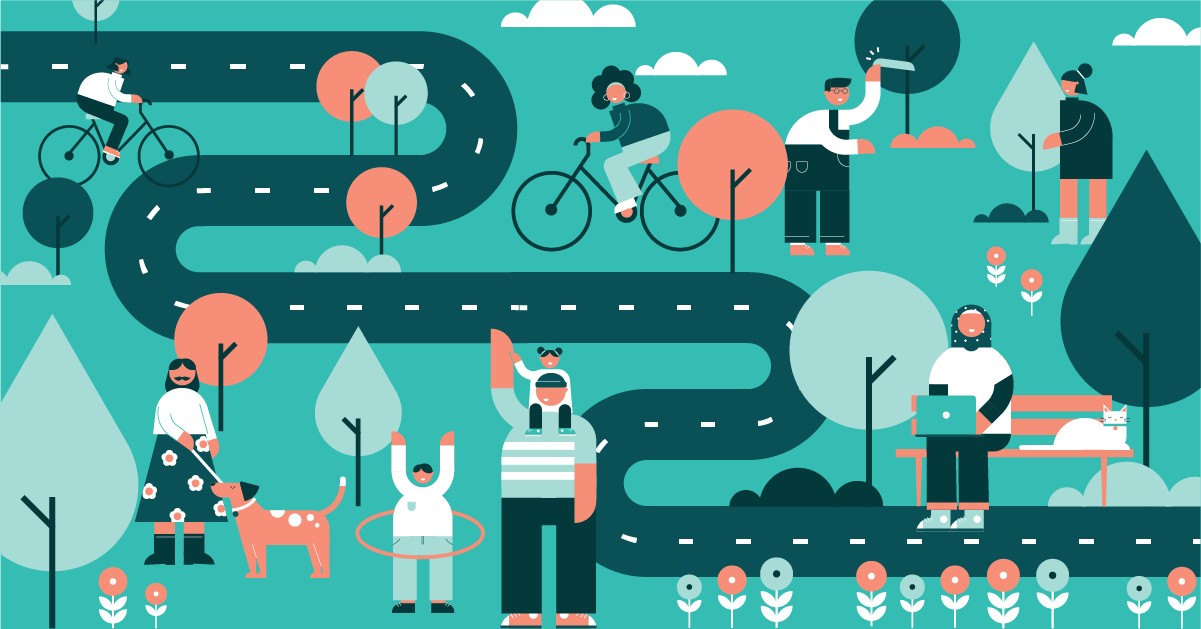
City centres without private cars – this is what the sustainable city of tomorrow could look like.
Driving together for a better future
Two concepts are highly important for reducing traffic and congestion on the roads: shared mobility and on-demand transport. In contrast to classic taxis, Uber or Lyft, shared mobility involves the simultaneous transport of several people. Studies already show that Uber and Lyft do not contribute to relieving the burden on the roads, but actually do the opposite. Due to frequent single trips, they contribute to traffic jams and air pollution. Transporting several passengers with a single on-demand bus means that fewer vehicles need to be used – and fewer vehicles means more space on the streets for people to use.
Fewer vehicles means more space on the streets for people to use.
The on-demand aspect also plays an important role. While regular service buses can also efficiently transport several passengers at once, their schedules are not flexible and they cannot compete with cars in terms of comfort. Many people reach for their own car keys instead because they want to be transported as quickly and easily as possible directly to their desired destination.

Transporting more passengers with a new on-demand bus automatically means that fewer vehicles need to be used – and fewer vehicles means more space on the streets for people to use.
On-demand buses are the solution that combines both aspects. Passengers can flexibly connect with a transport service precisely when they need it. The journey is handled digitally, and virtual stops are only a few minutes’ walk from the desired pick-up and drop-off points. If several people want to travel in the same direction and can be transported together without long waiting times or detours, the algorithm efficiently assigns them to the same trip. So the system pools several passengers together, minimizing the total time needed to transport all the passengers to their destination. The needs-based, pooled transport of several passengers together, coupled with a user-friendly, digital application and intelligent technology, means that on-demand buses will eliminate the need for personal cars in the future.
Cities for people, not for cars
The reduction of vehicles on the streets can, with the right policies, bring additional benefits to citizens. Not only do fewer vehicles lead to lower emissions and better air quality, they also take up less space – which can be used by residents in a variety of ways. Expanded green areas and wider pedestrian or cycle paths are just a few of many ideas for a more sustainable use of this newly gained space. The fact that 80% of the urban population is already exposed to increased pollution makes the need for modern mobility solutions clear. Several studies have also shown that traffic increases exponentially with the size of the roads. Reclaiming the streets as living space is therefore a good way to reduce traffic and emissions in the long term.
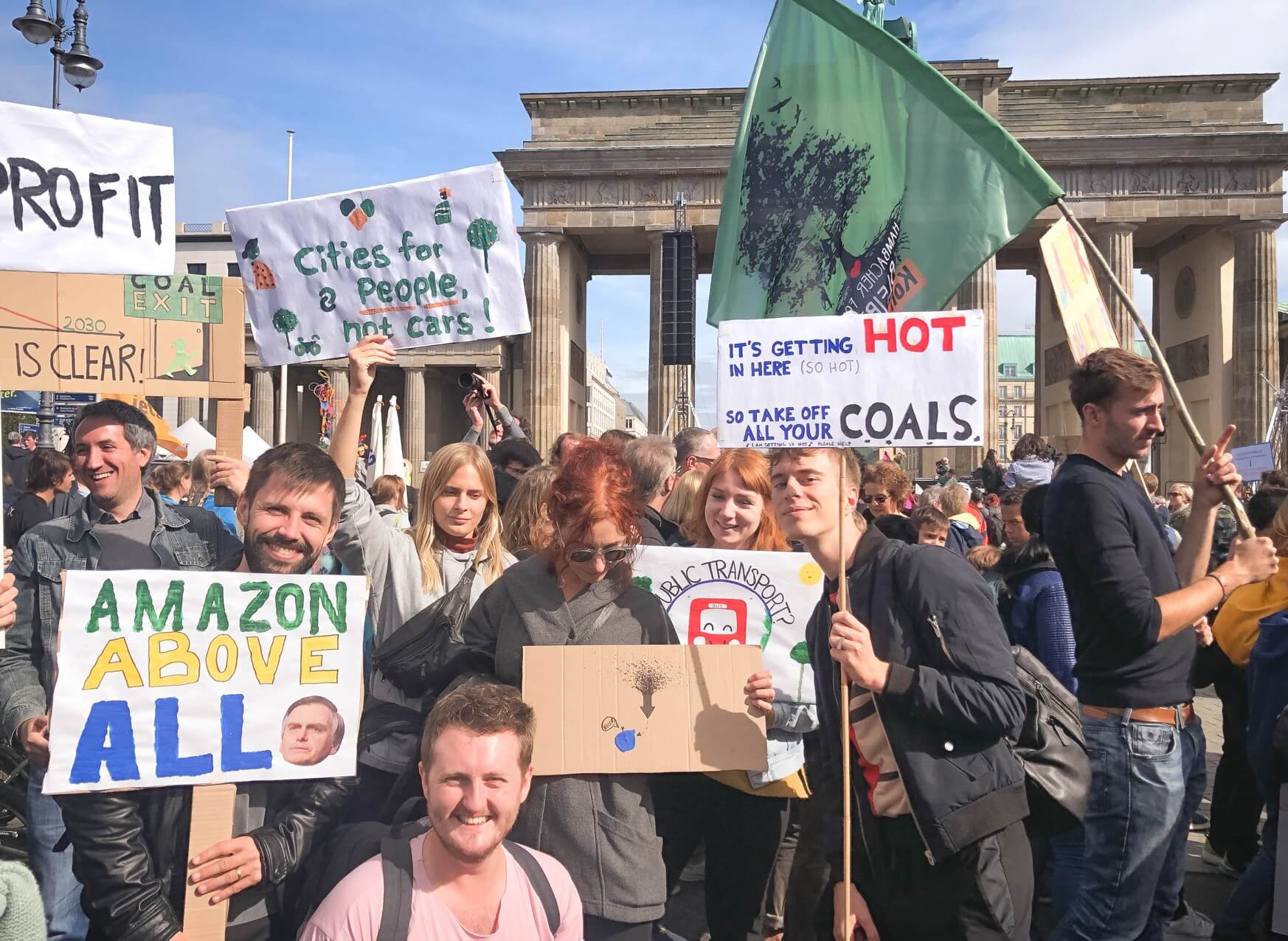
The door2door team at the climate strike in Berlin.
Some cities are already declaring war on excessive traffic. Between 2010 and 2015, Philadelphia removed 3,000 street parking spaces. Amsterdam has announced that 1,500 parking spaces will be removed each year to create more space for cycle paths. However, in order to plan sustainably, cities, municipalities and public transport operators have to create alternative offers to reduce car use while meeting modern mobility demands – for a sustainable future of cities for people, not cars.
